Choosing the right theme is very crucial for creating a seamless and engaging shopping experience. In the world of e-commerce, your online store’s appearance can be your first and often most lasting impression. That’s where Shopify themes come into play.
Here in this guide, we will be exploring the very best Shopify themes available, highlighting their key features and helping you select the perfect fit for your brand and product offerings.
Why Shopify Theme Matters for Your Store: Beyond Aesthetics
A good Shopify theme offers much more than just a normal website, It impacts:
- User Experience (UX): Intuitive navigation, fast loading speeds, and mobile responsiveness are essential for keeping visitors engaged on your website.
- Conversion Rate Optimization (CRO): Features like prominent call-to-action buttons, product badges, and trust signals can significantly boost sales.
- Brand Identity: Your theme should reflect your brand’s personality and values, creating a memorable experience.
- SEO Performance: Well-coded shopify seo optimization theme can improve your store’s search engine rankings.
- Customization Flexibility: The ability to tailor the theme to your specific needs is crucial for long-term growth.
Key Features to Look for in a Shopify Theme
When evaluating best Shopify themes, consider these essential features:
- Mobile Responsiveness: With mobile commerce on the rise, your theme must look and function flawlessly on all devices.
- Fast Loading Speed: Page speed directly impacts user experience and SEO. Choose a theme optimized for performance.
- SEO Friendliness: Clean code, proper heading tags, and schema markup are crucial for search engine visibility.
- Customization Options: Look for themes that offer a wide range of customization options, including color palettes, fonts, layouts, and sections.
- Built-in Marketing Tools: Features like email signup forms, social media integration, and product review sections can boost marketing efforts.
- App Compatibility: Ensure the theme is compatible with popular Shopify apps to extend its functionality.
- Customer Support: Reliable support is essential for troubleshooting and resolving any issues.
- Accessibility: Themes should be designed to be accessible to all users, including those with disabilities.
- Product Filtering and Sorting: Allow customers to easily find the products they’re looking for.
- Upselling and Cross-selling Features: Encourage customers to purchase more by showcasing related products.
- Multiple Layout Options: Various layout options for Homepage, product pages, collection pages, blogs, and other pages.
- Mega Menus: For stores with large inventories, mega menus enhance navigation.
Top 15 Shopify Themes to Consider
1. Premium & Feature-Rich Themes:
– Dawn (Free, Shopify’s Official Theme):
- Key Features: Minimalist design, fast loading speeds, mobile-first approach, flexible sections, built-in marketing tools.
- Ideal for: Businesses seeking a clean and modern design with excellent performance.
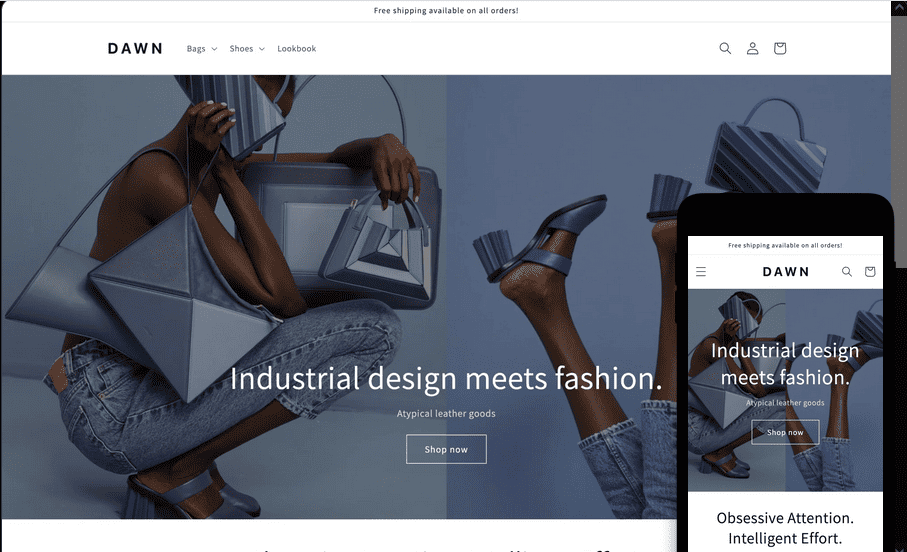
– Prestige:
- Key Features: Elegant design, high-resolution image support, video integration, advanced product filtering, customizable product pages.
- Ideal for: Luxury brands and businesses with visually stunning products.
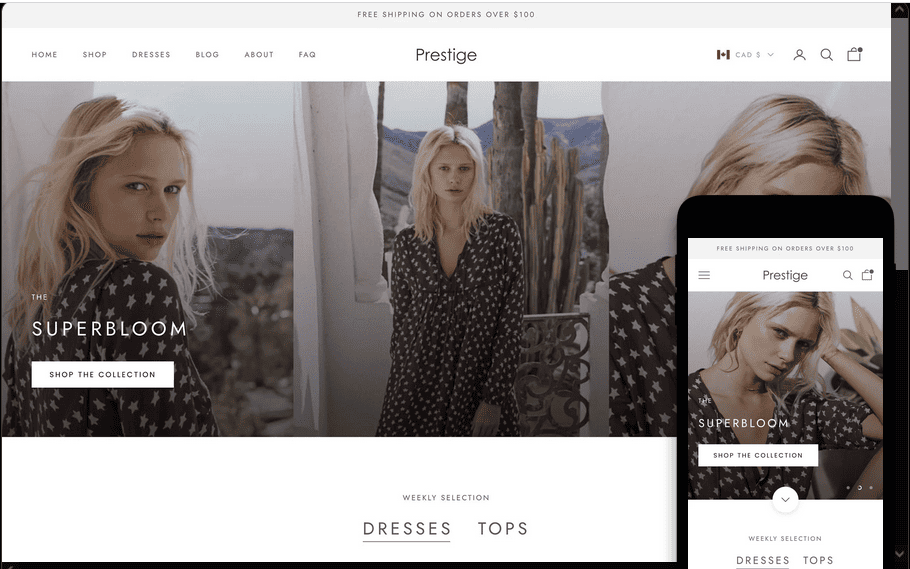
– Impulse:
- Key Features: Dynamic product grids, promotional pop-ups, customizable search filters, powerful marketing tools, highly customizable.
- Ideal for: High-volume stores and businesses focused on conversions.
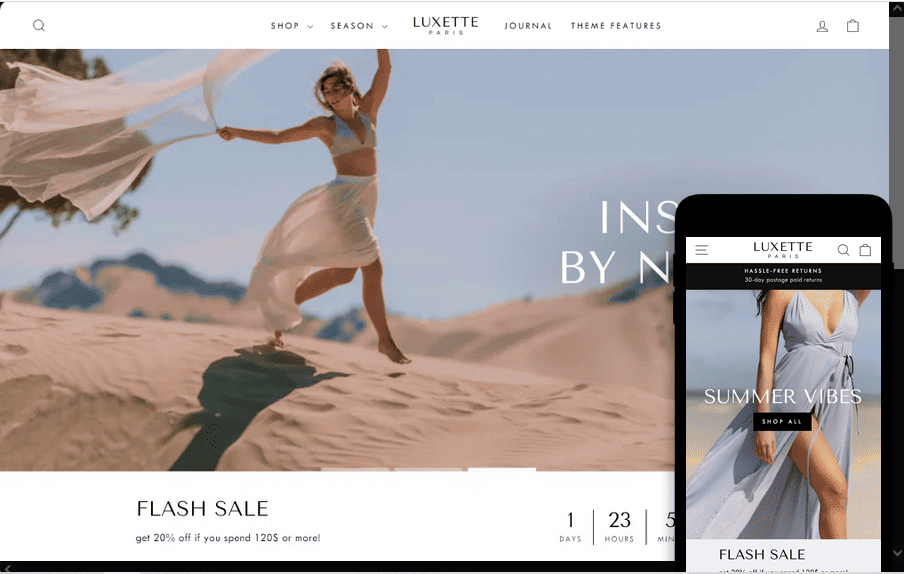
– Warehouse:
- Key Features: Designed for large inventories, robust search and filtering, quick view functionality, mega menus, advanced product page layouts.
- Ideal for: Businesses with extensive product catalogs.
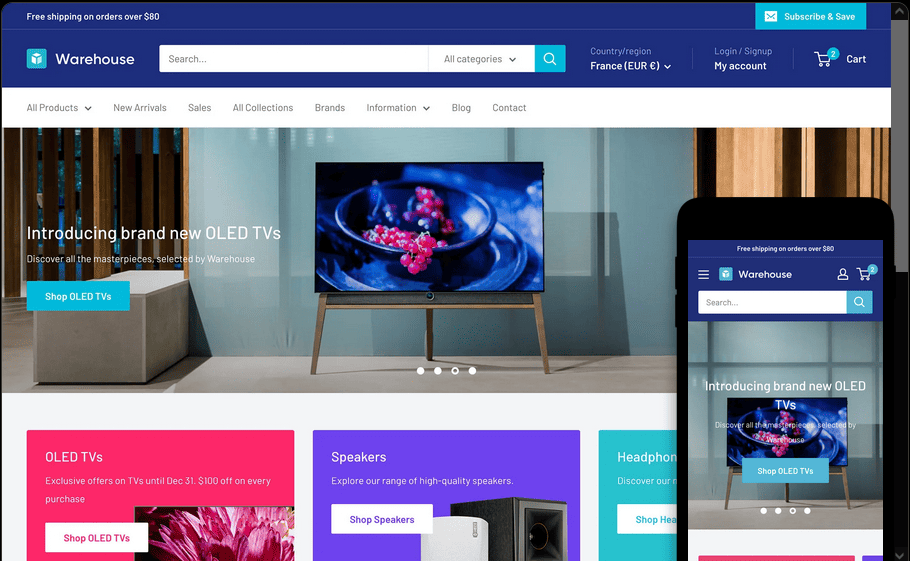
– Motion:
- Key Features: Video-focused design, dynamic product displays, immersive storytelling, smooth animations, visually engaging.
- Ideal for: Brands that want to create a captivating and interactive shopping experience.
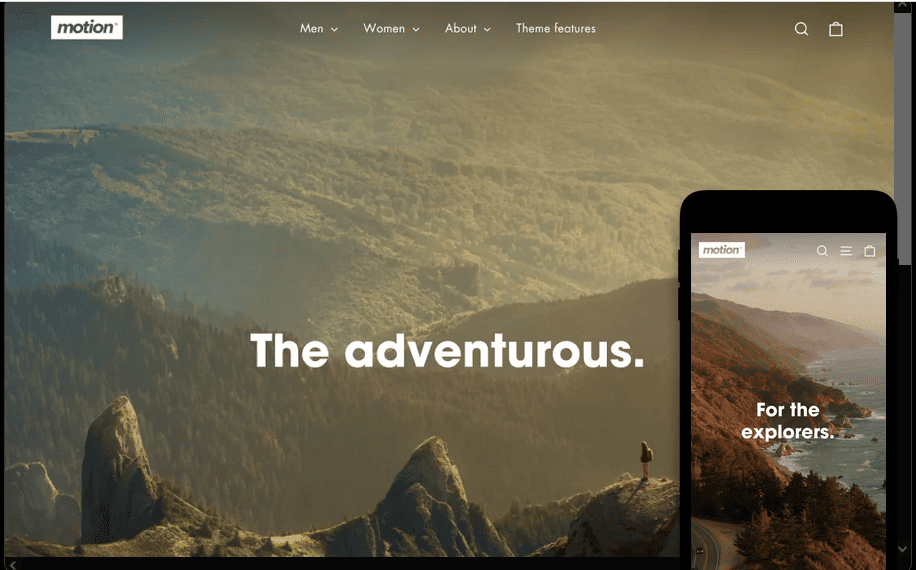
2. Versatile & Customizable Themes:
– Ella:
- Key Features: Highly customizable, multiple homepage layouts, extensive product page options, advanced filtering, built-in apps.
- Ideal for: Businesses seeking maximum flexibility and control over their store’s design.
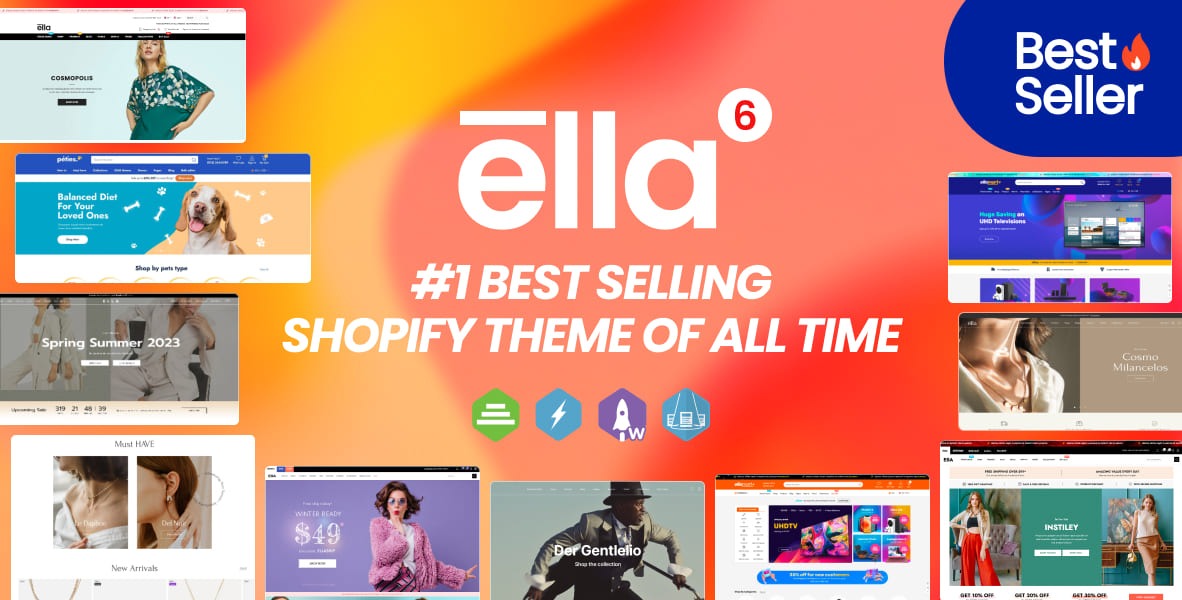
– Kalles:
- Key Features: Mobile-first design, fast loading speed, flexible layouts, various header and footer options, optimized for conversions.
- Ideal for: General purpose stores that want a highly converting theme.
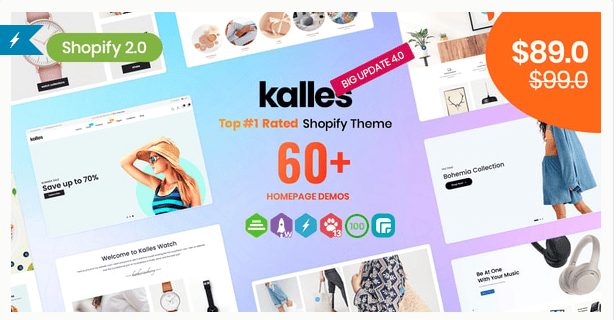
– Broadcast:
- Key Features: Storytelling focused, clean design, video integration, multiple collection page layouts, social proof sections.
- Ideal for: Brands that want to build a strong brand narrative.
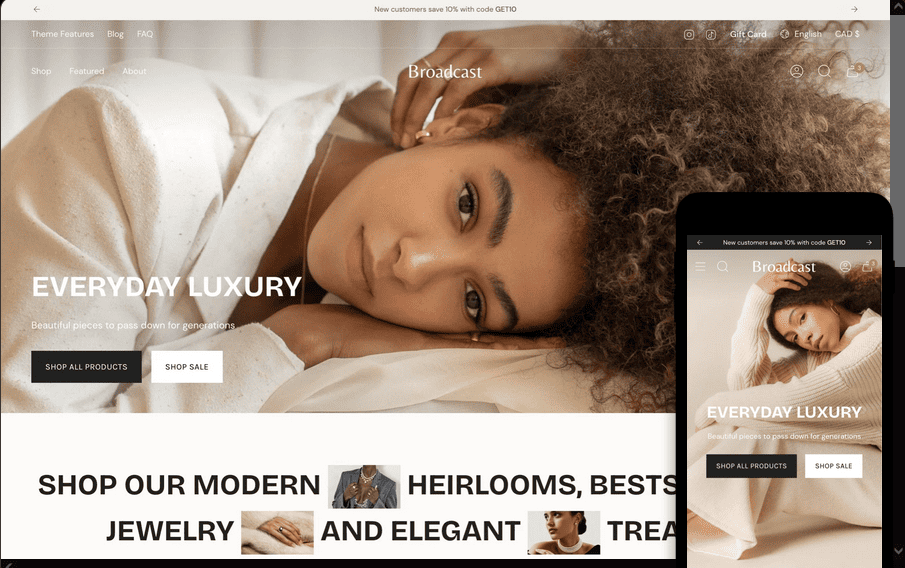
– Streamline:
- Key Features: Minimalist design, fast loading speeds, focused on product presentation, mobile-friendly, clean navigation.
- Ideal for: Brands that prioritize simplicity and performance.
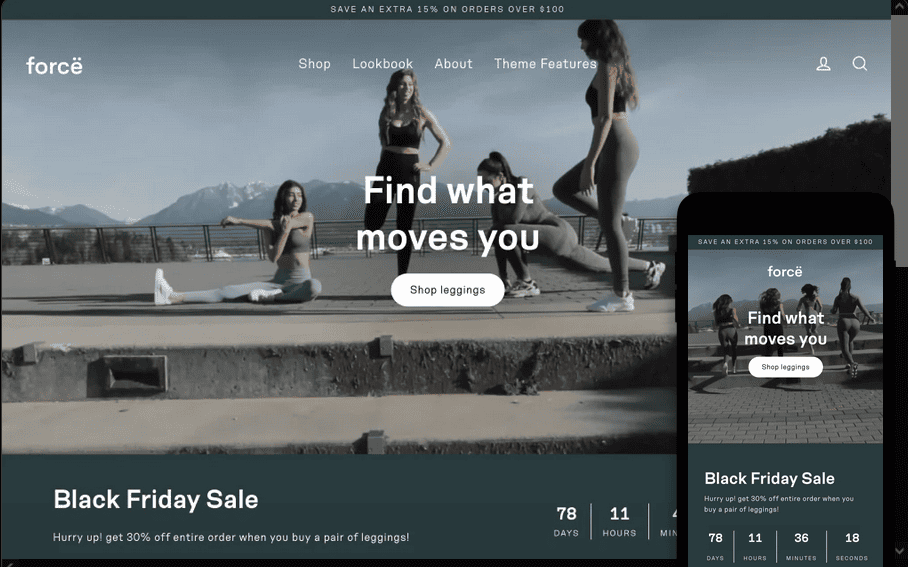
3. Niche-Specific Themes:
– Foodly:
- Key Features: Designed for food and beverage businesses, recipe integration, product bundles, delivery options, visually appealing product displays.
- Ideal for: Online food stores and restaurants.
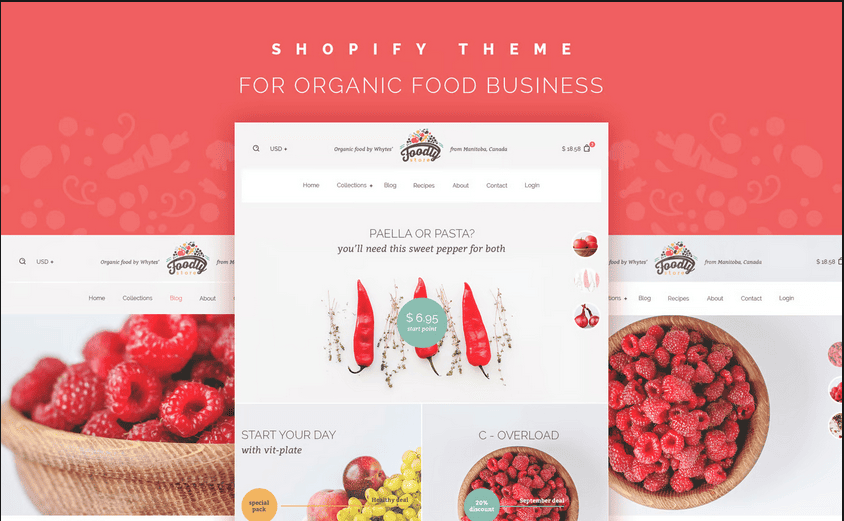
– Venue:
- Key Features: Designed for events and ticketing, event calendar integration, ticket purchasing options, location maps, visually rich layouts.
- Ideal for: Event organizers and businesses selling tickets.
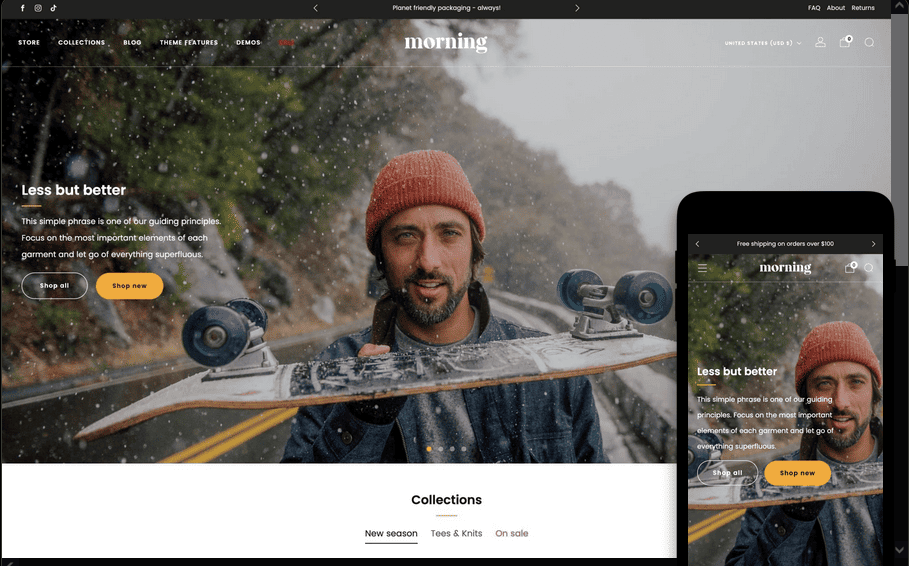
– Handmade:
- Key Features: Crafted for handmade and artisan products, unique product displays, storytelling sections, visually appealing galleries, personalized feel.
- Ideal for: Artists, craftspeople, and businesses selling handmade goods.
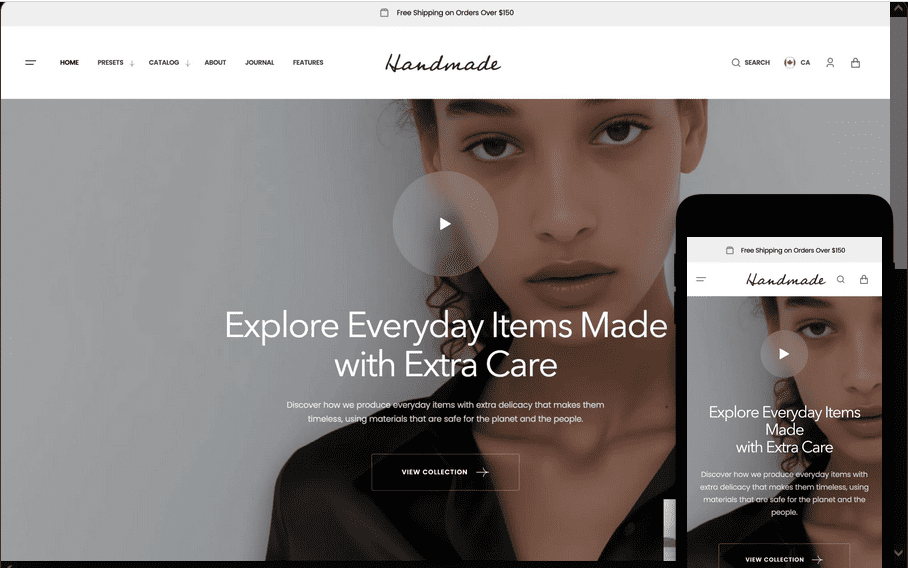
– Capital:
- Key features: B2B focused, large catalog support, quote request functionality, customer account features, designed for wholesale.
- Ideal for: B2B companies.
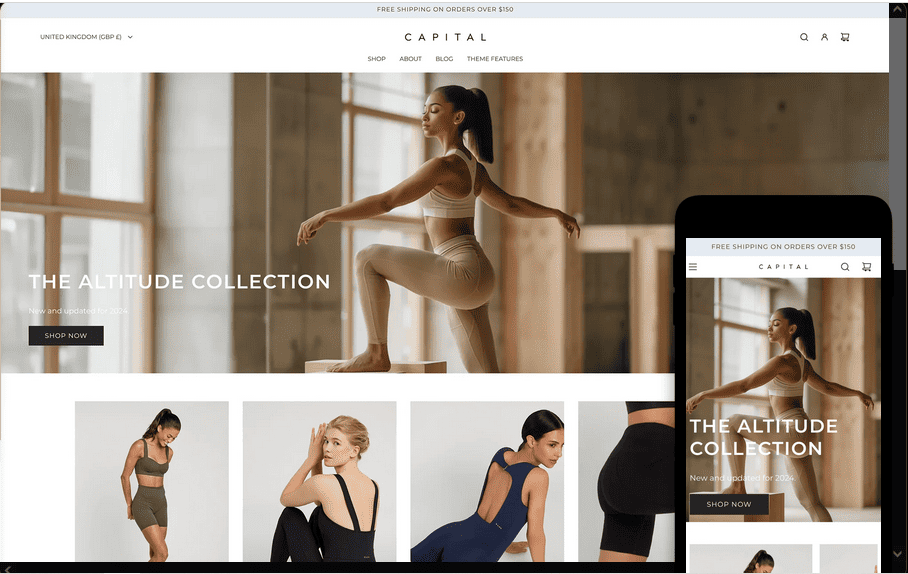
– Basel:
- Key features: Highly customizable, modern design, fast loading, various product page layouts, suitable for multiple niches.
- Ideal for: Many niches, especially clothing, furniture, and general retail.
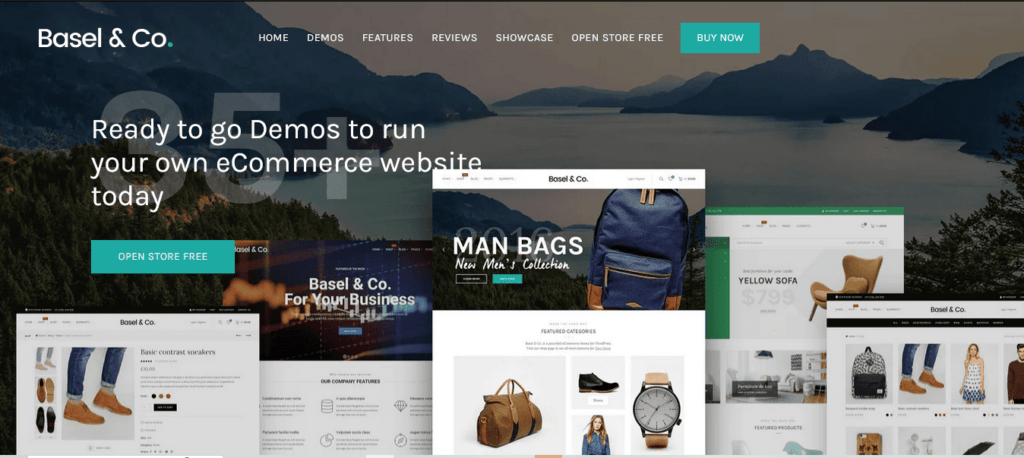
Choosing the Right Theme: A Step-by-Step Approach
- Define Your Brand and Target Audience: Understand your brand’s personality and your target audience’s preferences.
- Determine Your Product Offerings: Consider the type and quantity of products you sell.
- Identify Essential Features: Prioritize the features that are most important for your business.
- Browse Theme Demos: Explore the demos of different themes to see how they look and function.
- Read Theme Reviews: Check customer reviews and ratings to get insights into the theme’s performance and support.
- Test the Theme: If possible, test the theme in a development store before making a purchase.
- Consider Your Budget: Factor in the theme’s price and any potential customization costs.
- Evaluate Customer Support: Ensure the shopify developer offers reliable customer support.
Conclusion
Selecting the best Shopify theme is a critical decision that can significantly impact your online store’s success. By carefully evaluating your needs and considering the key features and themes outlined in this guide, you can create a visually appealing, user-friendly, and conversion-optimized store that drives sales and builds a strong brand presence. Remember to prioritize user experience, mobile responsiveness, and customization flexibility. With the right shopify theme, you can unlock the full potential of your Shopify store and achieve your e-commerce goals.